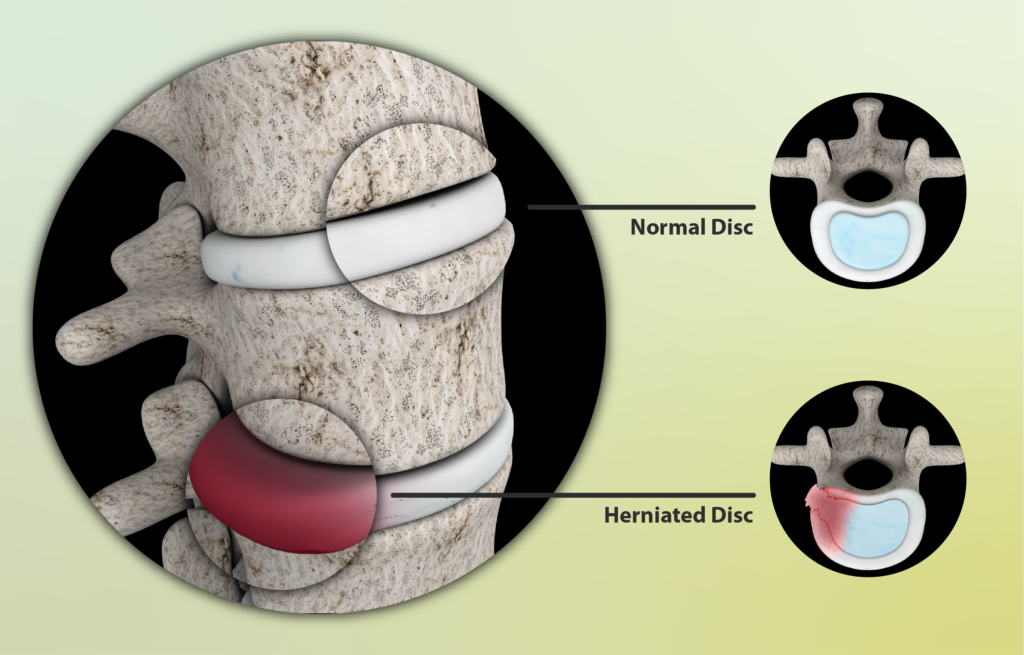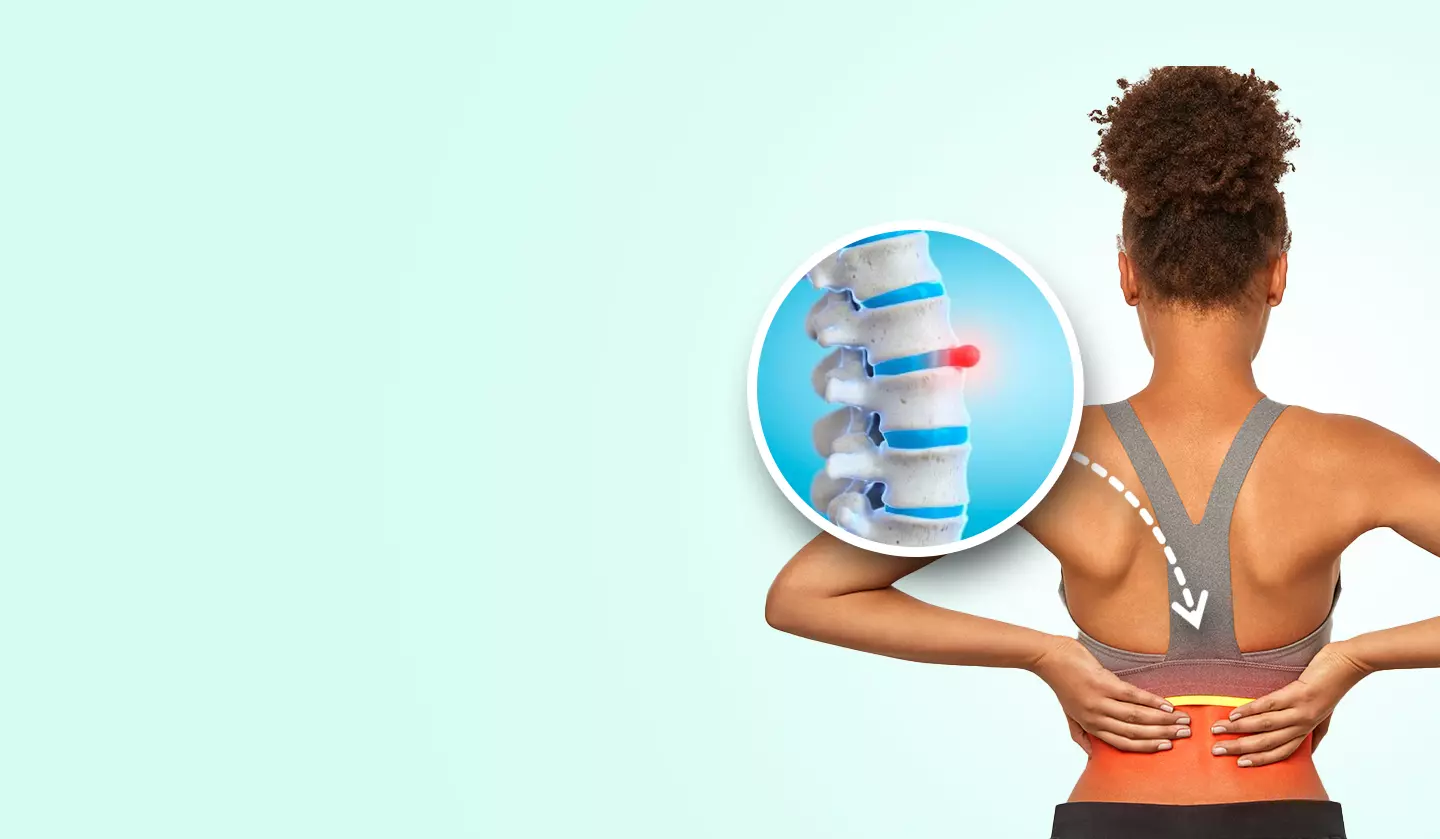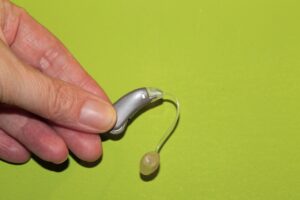Slipped Disc Treatment – If you have ever experienced debilitating back pain, you may have encountered the term “slipped disc.” This common condition, medically known as a herniated or ruptured disc, can cause significant discomfort and impairment in daily life. In this comprehensive guide, we’ll explore the various aspects of slipped disc treatment, from traditional methods to alternative therapies and surgical options.

Introduction to Slipped Disc
A slipped disc occurs when the soft inner core of a spinal disc protrudes through the tough outer layer, putting pressure on nearby nerves. This can result from age-related wear and tear, sudden trauma, or repetitive strain on the spine.
Symptoms of Slipped Disc
The symptoms of a slipped disc can vary depending on the location and severity of the injury. Common signs include sharp pain in the affected area, numbness or tingling sensation radiating down the arms or legs, and weakness in the muscles surrounding the spine.
Diagnosis of Slipped Disc
Diagnosing a slipped disc typically involves a combination of physical examination and imaging tests such as MRI or CT scans. These diagnostic tools help healthcare professionals assess the extent of the disc herniation and plan an appropriate treatment strategy.
Traditional Treatments for Slipped Disc
Traditionally, slipped disc treatment has focused on conservative approaches such as rest, pain medication, and physical therapy. In more severe cases, corticosteroid injections may be recommended to reduce inflammation and alleviate symptoms.
Alternative Treatments for Slipped Disc
In recent years, alternative therapies like chiropractic care, acupuncture, and mind-body practices such as yoga and Pilates have gained popularity as complementary treatments for slipped disc. These modalities aim to improve spinal alignment, reduce muscle tension, and promote overall well-being.
Surgical Options for Slipped Disc
When conservative treatments fail to provide relief, surgical intervention may be necessary. Common surgical procedures for slipped disc include microdiscectomy, which involves removing the protruding disc material, spinal fusion to stabilize the spine, and artificial disc replacement to restore mobility.
Recovery and Rehabilitation
Following surgery, rehabilitation plays a crucial role in restoring function and preventing recurrent disc herniation. Physical therapy exercises, proper posture techniques, and lifestyle modifications are essential components of the recovery process.
Prevention of Slipped Disc
While not always preventable, certain lifestyle habits can reduce the risk of developing a slipped disc. Maintaining good posture, practicing proper body mechanics, and avoiding heavy lifting can help protect the spine from injury.
Importance of Seeking Professional Help
It’s essential to seek medical attention if you suspect you have a slipped disc, as early intervention can prevent complications and improve outcomes. Delaying treatment may lead to worsening symptoms and long-term disability.
Living with Slipped Disc
Living with a slipped disc can be challenging, but with the right strategies and support, individuals can manage their condition effectively. Coping techniques, adaptive equipment, and participation in support groups can enhance quality of life.
Case Studies and Success Stories
Real-life examples of individuals successfully managing slipped disc can provide hope and inspiration to others facing similar challenges. These stories highlight the importance of perseverance and resilience in overcoming adversity.
Costs Associated with Slipped Disc Treatment
The costs of slipped disc treatment can vary depending on factors such as the severity of the condition, the chosen treatment approach, and insurance coverage. It’s essential to consider both financial and health-related aspects when making treatment decisions.
Current Research and Innovations
Ongoing research efforts are focused on developing new treatment modalities and advancing existing techniques for slipped disc management. From minimally invasive procedures to regenerative medicine approaches, the future holds promise for improved outcomes for patients with this condition.
Myths and Misconceptions
There are many myths and misconceptions surrounding slipped disc, which can lead to confusion and misinformation. By debunking these myths and clarifying misconceptions, we can promote a better understanding of the condition and its treatment options.
Conclusion
Slipped disc treatment encompasses a range of approaches, from conservative therapies to surgical interventions and alternative modalities. By understanding the symptoms, diagnosis, and treatment options available, individuals can take proactive steps to manage their condition and improve their quality of life.
FAQs (Frequently Asked Questions)
- Is surgery the only treatment option for a slipped disc?
- No, surgery is typically reserved for cases where conservative treatments have failed to provide relief. Many individuals find relief through non-surgical approaches such as physical therapy and medication.
- How long does it take to recover from slipped disc surgery?
- Recovery time can vary depending on the type of surgery performed and individual factors such as overall health and adherence to post-operative instructions. In general, most people can resume normal activities within a few weeks to months after surgery.
- Are there any exercises I can do to relieve pain from a slipped disc?
- Yes, certain exercises can help strengthen the muscles supporting the spine and improve flexibility, which may alleviate symptoms associated with a slipped disc. However, it’s essential to consult with a healthcare professional before starting any exercise program.
- Can a slipped disc heal on its own?
- In some cases, a slipped disc may heal on its own with rest and conservative treatments. However, severe or persistent symptoms may require medical intervention to alleviate pain and prevent further complications.
- What are the risk factors for developing a slipped disc?
- Risk factors for slipped disc include age-related degeneration of spinal discs, improper lifting techniques, obesity, and sedentary lifestyle. Engaging in regular exercise and practicing good posture can help reduce the risk of developing this condition.




